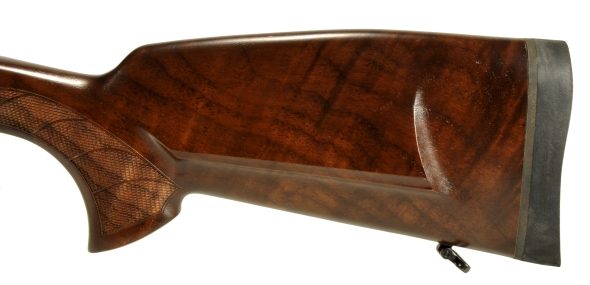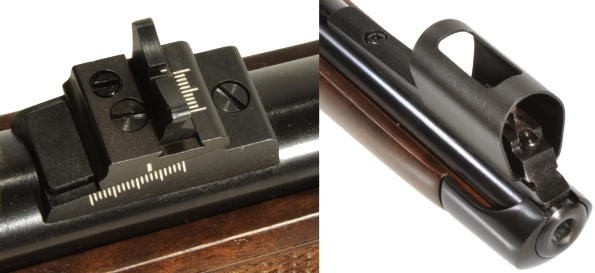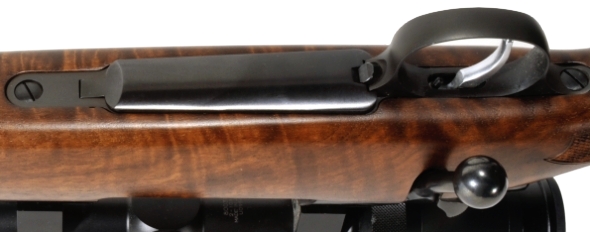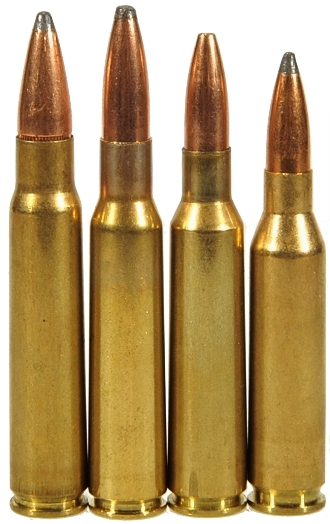
I’m on vacation… taking a break…. momentarily tired of writing about wonderful products, with broad applications, that sincerely deserve objective coverage, but personally bore the crap out of me. Usually a cup of coffee and shooting holes into something can get me there, but sometimes I just have to spend some time doing something I personally enjoy, spending personal time with personal firearms. Which is why I’m so… personable.
The decision making struggle…
Why the 6.5x55mm Swede? The national connotation probably has a lot to do with its appeal, although care must be taken to segregate the notions of a minimalistic, precisely functioning Swiss watch design from the creative but bureaucratically influenced designs of the Volvo or SAAB. Too many people write to tell me I’ve erred and that the cartridge is the 6.5×55 Swiss.
The word “Swede” is also associated with the 1949 movie Mighty Joe Young. Phil Olafsson, in his Swedish Angel persona, was an impressive part of a tug of war with the giant ape and he and Primo Carnera held on until the very last. I was left with the early life impression that Swedes are tough and persistent.
And I am still infatuated with Ingrid Bergman who suggests some Swedes are exceptionally attractive. Of course, I do still struggle to understand the subtext of Ingmar Bergman films while I clearly get Woody Allen, which suggests there is more to Swedes than meets the eye.
Is the 6.5x55mm better than the 260 Remington? I think the question is a bit silly. There is not enough ballistic separation to affect an objective decision and the question does not take into consideration a rifle’s personality or the more pragmatic reasons one might apply when selecting one over the other; supply of ammunition, reloading components and reloading tools, company reputation.
Currently, there are ten companies offering twenty-seven factory loads for the 6.5x55mm and in stock at four major retail chains. Six companies produce brass, four are routinely stocked. Thirteen companies produce eighty two varieties of 6.5mm bullets. While some of the specialty bullets go in and out of stock, seventy of the more popular are in ready supply. Seven companies produce a variety of sixty three die sets for the 6.5x55mm, all but the very specialized are inventoried.
What was the purpose of going through this exercise regarding 6.5x55mm material availability? Because someone not acquainted with this round will jump to the conclusion that ammunition and related material is in short supply… obviously, that is not the case.
What about the rifle manufacturer, CZ? The parent company is good, the U.S. subsidiary is so-so. There are some very talented employees who command respect for the quality of the work they do, but there is also a smattering of people who mostly spend the company’s money, confuse themselves with the talent and project lots of attitude. Product quality varies and the parent company sometimes leaves the impression that they see the U.S. market as a place to dump inventory or to experiment with specifications. One pistol I own, matching numbers and purchased new, has a slide designated for a poly frame model, unfortunately it was fitted to an aluminum alloy frame as an “assemble from what ever inventory is on hand” policy.
One of the full stock centerfire rifles I own was received with a steel floorplate and other bottom metal, the next with a plastic floorplate and follower. All of the standard full stock rifles have plain grained Turkish walnut stocks, but they are finish with an undercoat to give the appearance of tiger stripe. That said, all of the CZs I have owned or shot shoot well, function reliably and deliver better accuracy than the factory included targets suggest which is why I can hold my nose over the company and still be a happy owner. The rifle pictured, with the exception of checkering, is a knock out.
The measure of the rifle is in the details

The hog’s back stock with Bavarian style cheek piece has a 1″ drop at its comb and 2″ at its heel and a swept pistol grip. Sling swivels are included with the rifle, as is the Pachmayer Decelerator recoil pad. The stock geometry is actually quite comfortable when shooting with metallic sights or a scope.
The metallic sights supplied with the rifle are of quite good quality and design. The rear leaf sight is steel and adjustable for windage and elevation. Each full horizontal increment results in a 15 cm (Approx 6″) shift at 100 meters, vertical increments are 3 cm (Approx 1.2″) at the same distance. However, adjustment in both directions can be made in partial increments for finer adjustment.

The front sight is another well thought out piece. The ramp is gradual and its surface is striated to kill off glare for a cleaner sight picture. The hood is locked into its channels to prevent it from coming out under recoil, its window brings in sight blade illumination without diminishing brush guard protection. The blade is quick change, held in place with a spring loaded button in the supporting ramp. A lot of nice work went into the detail; of the nose cap and stock retention and inletting fit.
The trigger on this CZ550 is a single set variety; pushing forward on the trigger when the action is cocked reduced the trigger pull. Both set and unset trigger pull is adjustable, as is overtravel and pretravel. The trigger on this rifle is adjusted to 2 lbs 8 oz not set and 1 lb 7 oz set because it is logging a lot of range time. Prior to hunting the trigger will be adjusted to 4 lbs, 2 lbs set.

The bottom metal as received on this rifle is nicely blued and finished alloy steel. The floorplate release is not the Oberndorf type with the release within the trigger guard, the release button is at the union of guard and floorplate and very positive in actuation.
The bolt shroud is slick… steel also, a cocked / uncocked indicator projects from its center. The rifle’s hardware finish is clean and uniform in its entirety and it remains rust free with just the occasional wipe down after use.

The thumb safety is low profile. Both red and white exposed signifies “fire”, white only exposed put the rifle in safe, but the bolt can still be cycled. Both covered means the rifle in on safe and the bolt handle is locked in the closed breech position.

The CZ 550 is a double square bridge Mauser type with integral 19mm dove tails for scope ring mounting. The rear dovetail has a vertical relief to accept a corresponding interlock on the rear ring; great longitudinal stability and mo front or reward travel. Shown, Warne rings made to the CZ proprietary specification.
So the rifle works, how about the cartridge?
 The 6.5×55 Swedish is an interesting cartridge. It was widely chambered in military Mauser firearms and it remains in popular use with Swedish and Norwegian big game hunters and competitive shooters. The 1894 Model 94 version was originally loaded with a 156 grain bullet at 2378 fps, the Model 41 version with a 139 grain pointed boat tail at 2625 fps. Both velocity standards are based on a rifle with a 29.10″ barrel.
The 6.5×55 Swedish is an interesting cartridge. It was widely chambered in military Mauser firearms and it remains in popular use with Swedish and Norwegian big game hunters and competitive shooters. The 1894 Model 94 version was originally loaded with a 156 grain bullet at 2378 fps, the Model 41 version with a 139 grain pointed boat tail at 2625 fps. Both velocity standards are based on a rifle with a 29.10″ barrel.
The original Model 94 full stock carbine was issued with a 17.7″ barrel. A rare version intended for short range gallery practice has a 1:16.93″ twist rate, however, the typical carbine has a 1:7.87″ twist, intended to stabilize the original long 156 grain round nose bullet. Winchester and Ruger rifles chambered for the cartridge have a 1:8 twist. The CZ-550 FS has a 1:8.6″ twist. All suit more modern, short length bullet designs.
The 6.5x55mm SE is an all North American hunting cartridge, excepting large bear. Not because the Swede would not possess that level of lethality, but rather because there is little reason to take that chance. For hunting in New England, the CZ 550 FS and cartridge combination is a good fit; the cartridge covers out to 300 yards, the rifle has metallic sights and the 30-06 Springfield length action offers a good deal of flexibility for handloading.
Above: 8x57mm, 7x57mm, 6.5x55mm, 260 Remington. The 6.5x55mm is 0.007″ larger at the rim, 0.009″ body and 0.006″ shoulder than the 7x57mm and 8x57mm, but significantly shorter which helps it maintain decent case capacity. The 6.5x55mm does not share a parent case with the others. The 260 Remington has the casehead dimensions of the 7x57mm and 8x57mm, but it has little case taper to maximize capacity at an even shorter length.
| Cartridge | Rim “ | Body “ | Shoulder “ | Case Length “ |
Overall Length “ |
Grains Capacity |
MAP KPSI |
Standard |
| 6.5x55mm | 0.480 | 0.480 | 0.435 | 2.165 | 3.150 | 57.0 | 55 | CIP |
| 7x57mm | 0.473 | 0.471 | 0.429 | 2.235 | 3.065 | 59.5 | 56 | CIP |
| 8x57mm | 0.473 | 0.470 | 0.431 | 2.240 | 3.250 | 63.0 | 56 | CIP |
| 260 Remington | 0.473 | 0.471 | 0.454 | 2.035 | 2.800 | 53.5 | 60 | SAAMI |
What’s rounder, an orange?
On closing Part I, the rifle specifics appear on the table below. I’m going back to finish selecting bullets, some for hunting, some for testing the rifle’s accuracy potential and I will eventually get back with Part II… couple of days.
|
CZ 500 FS |
|
| Manufacturer | Česká Zbrojovka |
| SKU | 04050 |
| Type | Bolt Action – 90º Lift |
| Caliber | 6.5x55mm SE |
| Mag Capacity | 5 |
| Barrel Length | 20.5″ |
| Rifling | 1:8.6″ |
| Weight – Actual | 7 Lbs 8 Oz |
| Overall Length | 41.5″ |
| Stock Material | Walnut |
| Hardware | Blued Alloy Steel |
| Length of Pull | 14.25″ |
| Drop at comb | 1″ |
| Drop at heel | 2″ |
| Sights | Adjustable W/E |
| Scope Mounting | 19mm Dovetail |
| Trigger – Single Set | 1lb 15oz / 2lb 15oz |
| Safety | 3 Position |
| MSRP | $890 |
|
Weights and Measures Actual, Not Nominal |
|
Compact Firearms and Cartridges of Pedigree Part I
Compact Firearms and Cartridges of Pedigree Part 2
Compact Firearms and Cartridges of Pedigree Part 3

Email Notification